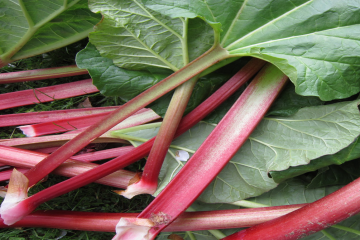 Great herb gardening tips along with cooking tips, food and kitchen ideas for the dedicated home cook. Use your organic kitchen and yard materials by recycling and reusing them to create a natural herb garden.
Great herb gardening tips along with cooking tips, food and kitchen ideas for the dedicated home cook. Use your organic kitchen and yard materials by recycling and reusing them to create a natural herb garden.
No matter how many flowers, fruits and vegetables they want to show off, gardeners always take you past their herb garden. These fragrant beds are often planted at the focal point of the garden surrounding the sundial, fit into rock gardens, bordering garden paths or behind a wooden bench so that you can breathe in their aroma as you sip your lemonade and admire your host’s handiwork.
To be purely practical, though, it is best to plant herbs as close to the kitchen door as the sun will allow. It is easy, even on a rainy day, to dash out of the kitchen wielding a pair of scissors and snip off a few leaves, but if you have to go waltzing down the garden path you may just be lazy enough to use the dried ones that are handy, thinking no one will notice. They probably won’t. But you will.
Not much space is needed for a small kitchen herb garden.; A three foot square will do nicely. Herbs don’t need much watering, and most varieties don’t require particularly good soil. About all they ask for is plenty of sunshine, and of course a little of your TLC. Begin with a few herbs and really get acquainted with them by growing and using them. You will find yourself wondering how you ever did without them and be eager to become familiar with more varieties. Many a green thumb has success with a windowsill kitchen garden as well, that can be enjoyed inside all year round.
An herb garden may seem less appealing than a rose garden, but it gives every bit as much pleasure to the dedicated cook and ultimately the eater. There are hundreds of plant options, so here are a couple of suggestions to get you started:
- Sit down with a seed catalog, garden layouts and any other resources you have available. Go to a Public Library and check out what they have to offer – then read, read, read.
- Next draw out and plan your garden on paper or on your computer. This will allow you to determine how many plants you can grow within the garden space you have available.
- Determine what herbs you cook with. A few basic ones to get you thinking:; Basil, Chives, Mint, Parsley, Rosemary, Thyme.
- If you don’t already have a compost pile, now is a great time to get one started. Save your kitchen fruit and vegetable peelings, dried leaves, grass and small twigs from your yard.
- Plant your herb garden and enjoy fresh, natural and organic herbs every day!
If you would prefer, fresh herbs can usually be found at farmers markets or good produce stores.
HOW TO DRY HERBS:
Air Drying.; Don’t leave herbs out in the sun to dry or the oils will be lost along with the fragrance. Instead, tie small bunches of each herb together and put them (heads downward), in a brown paper bag. Leave undisturbed for a few weeks until completely dry.
Microwave Drying. Put a single layer of the herbs between three or four thicknesses of paper towels and microwave on High for 2 minutes until they are dry (time will vary, depending on microwave). Add a few more seconds, if necessary.
Dehydrator. Follow manufacturer instructions for individual dehydrator and type of herb you are drying.
Store dried herbs in an air tight container, in a cool, dark place.

- How to Make Eggplant Ice Cubes - October 23, 2017
- Keeping Parsley Fresh - July 26, 2017
- Learn How to Clean Potpourri - July 25, 2017




